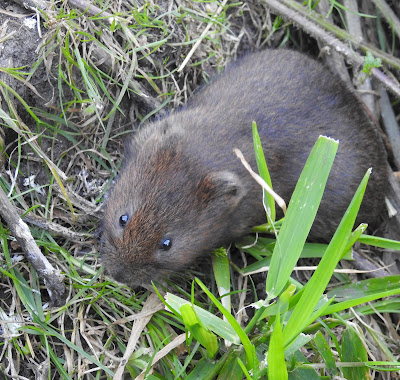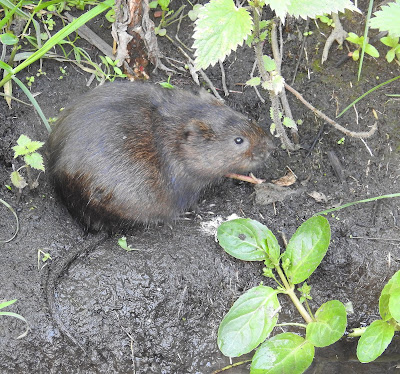Whose big foot is this?
Fuzzy and dark fur: another juvenile.
This is how close they come: there are three voles in this picture.
Even though this is only a young vole, you can clearly see the scent glands on its flanks.
Pink tongue!
I'm seeing at least five an hour, though it could be more.






























































